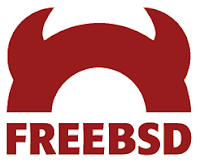
FreeBSD is the Operating System which of the family of UNIX. FreeBSD installation is actually quite simple, and after you have done it a few times, it will be second nature. For this installation, you will only need CD1. Insert the CD, and boot your system.
Step One : Country Selection
Select your country and hit enter.
Step 2 : Selecting installation options
On the Main Menu, we will use the standard installation.
Step 3: Disk space allocation
Partition creation with fdisk (these are also known as 'slices') - Hit OK to proceed. The first step is to select the drive(s) that will be used for our installation. For this demonstration, I have only one disk in the machine that will be used. Use the up/down arrow keys to select your boot drive, and hit the space bar, and you will proceed to the Partition Editor screen. I always hit 'A' to use entire disk, then 'S' to toggle the boot flag, then 'Q' to quit. I've done it many times, so I just hit 'ASQ' in quick succession. Hitting 'Q' takes you back to the bootmanager screen. Select to use 'BootMgr', and you will be returned to the disk selection screen. If you have a second drive to configure partitions for, arrow down and hit space. For a second drive, the only difference is you would not hit 'S', as you would not want a boot flag on this drive. For a second disk, you would just hit 'AQ' in succession.
Step 4 : Create the partitions
Now its time to create the partitions within the slices. The up/down arrows will select the different disks if you have more than one. I always use the default size that the installer picks. For disk ad0, we just hit 'A' for Auto Defaults.
Step 5: Install a Boot Manager
The next screen will give you the option to install a boot manager. You should choose to install the FreeBSD boot manager if:
You have more than one drive, and have installed FreeBSD onto a drive other than the first one;
You have installed FreeBSD together with another operating system on the same disk, and you want to choose whether to start FreeBSD or the other operating system when you start the computer;
Step 6 : Choose the distribustion
Next, we choose our distribution. I always use the minimal install. Minimal install takes the least amount of time, and guarantees that only the most necessary items will be installed. Everything else we will need, we will compile from the ports collection. Arrow all the way down to Minimal, and hit enter. Hit enter again to take the default option to load from CDROM, and once more again to confirm 'YES' to proceed. You will see the installer build the file systems, copy the base installation over, and end with a congratulations screen. Click OK to continue on.
Step 7: Finish installation and configuration
On the next screen you select the installation media.
After The installasion, you must answer about the congifuration of your FreeBSD. Enjoy with this daemon because it is Free








